This article was medically reviewed by Erik Kramer, DO, MPH. Dr. Erik Kramer is a Board-Certified Primary Care Physician at the University of Colorado. With over 15 years of experience, his clinical interests include obesity and weight management, diabetes care, and preventive care, as well as embracing a holistic approach to primary care. He received his Doctorate in Osteopathic Medicine (D.O.) from the Touro University Nevada College of Osteopathic Medicine and completed his residency at Central Maine Medical Center. Dr. Kramer is a Diplomate of the American Board of Obesity Medicine.
There are 8 references cited in this article, which can be found at the bottom of the page.
This article has been viewed 49,779 times.
An impacted bowel, also called a fecal impaction, is a blockage in your colon caused by prolonged constipation. This sounds serious, but it’s a treatable condition with an excellent prognosis. Your doctor can remove the blockage using a variety of methods, which alleviates your discomfort. You can then prevent a reoccurrence by following a diet and exercise regimen to keep your digestive system on a regular schedule.
Steps
Removing the Impaction Medically
-
1Contact your doctor if you have symptoms of a bowel impaction. A bowel or fecal impaction requires treatment by a doctor, so make an appointment as soon as you suspect you have one. Since bowel impaction can be caused by serious conditions, such as obstruction or bleeding, it’s important that you have it checked out right away. The following symptoms could indicate that you have an impaction:[1]
- Abdominal pain after meals, persistent urge to have a bowel movement, fewer than 3 bowel movements per week, nausea and vomiting, headache, poor appetite, and weight loss.
- You may also experience diarrhea occasionally as liquid stool goes around the blockage.
- If you experience these symptoms along with rapid pulse, rapid breathing, fever, agitation, confusion, and urinary incontinence, seek emergency medical help.
-
2Let the doctor examine you to see if you have an impaction. Testing for an impaction usually starts with the doctor questioning you about your symptoms. They will then feel around your abdomen for bloating or hard spots. The doctor may also give you a rectal exam to look at the impaction, if you have one.[2]
- For a deeper impaction, the doctor may order an x-ray to confirm if you have a blockage or get a better view of it.
- The doctor may also order a colonoscopy if they can't get a good view of the impaction. They may also do one after the blockage is cleared to check for other bowel problems that could have caused the impaction.
Advertisement -
3Take stool softeners as directed by your doctor. Before taking further steps, your doctor may try to induce a bowel movement with stool softeners. These draw more water into your large intestine to try and dislodge the blockage. Take the medication as directed by your doctor as a first step in treating the impaction.
- Common directions for stool softeners are to take the medication with a full glass of water and expect a bowel movement within a few hours.
- The doctor may recommend an over the counter product, or if the blockage is large enough, they may give you a prescription-strength medicine.
- Some impactions are caused by laxative overuse since your body gradually gets used to its effects. If your impaction is from laxative overuse, the doctor may skip this step.
-
4Try a suppository if you have trouble swallowing a pill. A suppository works similarly to a stool softener but is inserted into the rectum rather than swallowed orally. If you have trouble taking pills, then this is a good option to dislodge the impaction. Unwrap the suppository package and wet it with some water. Then lay on your side and insert it into your rectum. Wait 15-60 minutes for a bowel movement.[3]
- Read the product instructions or follow your doctor's directions for using the suppository safely.
- Wash your hands after inserting the suppository. You can also wear rubber gloves to keep your hands clean.
-
5Use an enema at home to remove the blockage. If the stool softener doesn’t work, then the doctor will probably tell you to use an enema at home. Enemas insert fluids into your rectum to flush out any blockages. Pick up the type that your doctor instructs you to use and follow the directions to administer it properly.[4]
- The instructions are usually the same for different enema brands. Fill the enema bag with the solution it comes with, lie on your side, and insert the tube into your rectum. Pump out all the fluid and stay still for 10 minutes. After that, you can go to the bathroom and have a bowel movement.
- The doctor may also instruct you to take a stool softener or suppository with the enema to ensure the blockage comes out.
- Enemas are a routine medical treatment and do not cause pain. You may find it uncomfortable, but there’s nothing to be afraid of.
-
6Visit your doctor to have the blockage physically removed. If the blockage is serious enough, your doctor may break it up manually. During this treatment, the doctor will insert one or two lubricated fingers into your colon and gradually remove the blockage in pieces. After the blockage is all gone, the doctor will give you further instructions on clearing the rest of the blockage and preventing another one.[5]
- The doctor may try to remove the entire blockage at once, or remove a little at a time and put you on stool softeners in between appointments. Follow whatever directions they give you.
- The doctor might use enemas to remove the rest of the impaction.
- You might also have an oral medication to take after having the blockage removed or using enemas.
Preventing Another Impaction
-
1Eat at least 25-30 g of fiber every day. A low-fiber diet can cause constipation and another impaction. Prevent this by getting the recommended 25-30 g of fiber every day. It’s best to change your diet and get most of your fiber from food, but you can also increase your daily intake with a fiber supplement.[6]
- Some of the best sources of natural fiber are leafy green vegetables, beans, berries, potatoes with the skin left on, peas, and nuts. Include a serving of foods like these with every meal.[7]
- If you usually eat white products like bread or rice, switch them to whole wheat types for a big fiber boost.
- Also avoid foods that are low in fiber or that cause constipation. These include high-saturated fat foods like red meat, alcohol, and processed foods.
-
2Stay well-hydrated so stool moves through your bowel easily. Dehydration binds your digestive system and can cause constipation. To prevent this, drink the recommended 2.7–3.7 liters (0.7–1 US gal) (11-15 cups) of water every day so your digestive system stays moving.[8]
- Drink as much plain water or seltzer as possible to avoid adding calories or sugars to your diet. Soda and sports drinks are very sugary and can sometimes cause further constipation.
- Remember to increase your water intake if you exercise or it's hot out. Your body needs more fluids in these conditions.
-
3Exercise 5 days a week to keep your GI tract moving. Staying immobile can also slow down your digestive system. Try to get 30 minutes of aerobic exercise 5 days per week to keep your digestion active. This draws blood and nutrients to your internal organs and can stimulate digestion.[9]
- Running, swimming, or playing fast-moving sports are the best ways to keep your digestive system moving. Resistance workouts like weight-lifting are good for your health but don’t stimulate your bowels as much.
- You don’t have to be a marathon runner to stay active. A daily walk or some aerobic videos at home are great for your health as well.
-
4Take a stool softener regularly if you’re immobile. If you’re older or disabled, then you may not be able to stay active. In this case, a regular stool softener can keep your digestion active and prevent constipation. Take all medications according to the instructions for the best results.[10]
- Speak with your doctor before you start taking a stool softener regularly. The drug may interact with other medications you’re taking or lead to dependence.
-
5Ask your doctor to switch you off medications that cause constipation. Certain medications could be causing your constipation. Speak with your doctor to review your medications and see if any could interfere with your digestion. If possible, your doctor could switch you off these medications so your digestion stays in order.[11]
- Common medications that cause constipation are opioid painkillers, antidepressants, some blood pressure medications, and incontinence medications.[12]
- If your doctor can’t switch you off medication that’s causing your constipation, then take extra steps to eat enough fiber, stay active, and drink enough water.
- Also take all your medication exactly as directed. Taking too much could also cause constipation.
Setting a Bowel Schedule
-
1Use the bathroom when you have the urge to stay on a schedule. Resisting the urge to use the bathroom can cause constipation and impactions over time. Listen to your body and when you feel like you have to have a bowel movement, go use the bathroom. This helps your body stay regulated.[13]
- You might resist having bowel movements because you’re shy about using the bathroom in public or at work. Try to get over your fear by finding a more private bathroom or going at quieter times of the day.
- Over time, if you continuously resist having a bowel movement, then you may not feel the sensation anymore. This is what causes constipation.
-
2Try to have a bowel movement at the same time every day. Attempting a bowel movement at the same time every day trains your bowels to evacuate on a regular schedule. This helps prevent constipation and keeps your digestive system regular.[14]
- Right after you have breakfast is the most popular time to try to have a bowel movement. This is also a good time because many people drink coffee in the morning, which stimulates the bowels.
- Even if you don’t feel like you have to go, still go to the bathroom at the same time. Over time, this tells your bowels that it’s time for evacuation.
-
3Allow 10 minutes for a bowel movement to ensure you’re finished. Incomplete emptying is another cause of constipation. When you use the bathroom, allow at least 10 minutes to ensure that you’re completely finished.[15]
- Try to build this time into your daily schedule. If you’re always running to work and don’t have time to use the bathroom, try waking up 15-20 minutes earlier so you have enough time.
References
- ↑ https://www.health.harvard.edu/a_to_z/constipation-and-impaction-a-to-z
- ↑ https://www.drugs.com/cg/fecal-impaction.html
- ↑ https://www.health.harvard.edu/a_to_z/constipation-and-impaction-a-to-z
- ↑ https://www.health.harvard.edu/a_to_z/constipation-and-impaction-a-to-z
- ↑ https://medlineplus.gov/ency/article/000230.htm
- ↑ https://www.ucsfhealth.org/education/increasing-fiber-intake
- ↑ https://www.mayoclinic.org/healthy-lifestyle/nutrition-and-healthy-eating/in-depth/high-fiber-foods/art-20050948
- ↑ https://www.health.harvard.edu/a_to_z/constipation-and-impaction-a-to-z
- ↑ https://www.mayoclinic.org/diseases-conditions/constipation/diagnosis-treatment/drc-20354259
- ↑ https://www.winchesterhospital.org/health-library/article?id=888126
- ↑ https://medlineplus.gov/ency/article/000230.htm
- ↑ https://www.health.harvard.edu/staying-healthy/what-to-do-when-medication-makes-you-constipated
- ↑ https://www.mayoclinic.org/diseases-conditions/constipation/diagnosis-treatment/drc-20354259
- ↑ https://www.health.harvard.edu/a_to_z/constipation-and-impaction-a-to-z
- ↑ https://www.health.harvard.edu/a_to_z/constipation-and-impaction-a-to-z


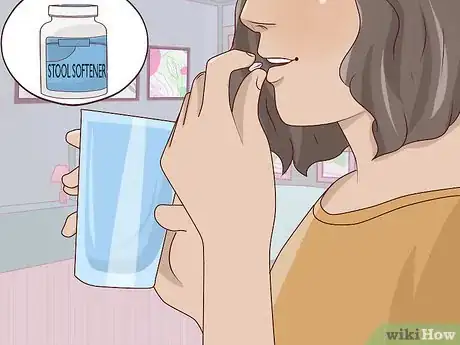

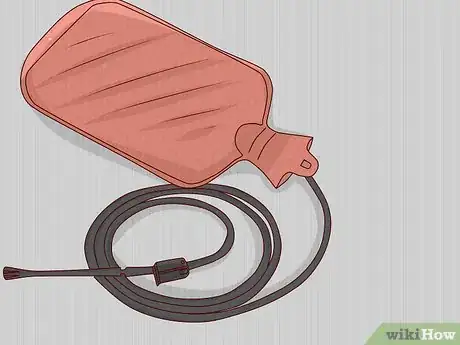










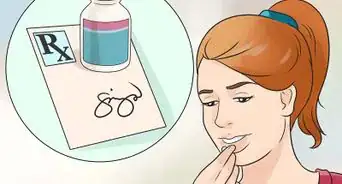
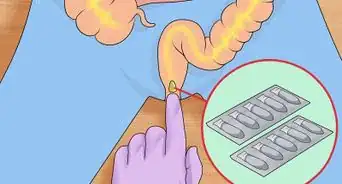

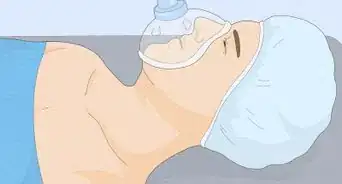

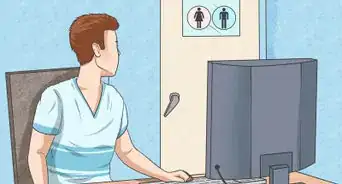




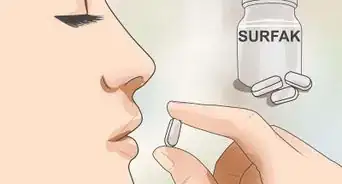








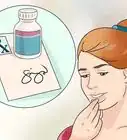

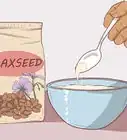




































Medical Disclaimer
The content of this article is not intended to be a substitute for professional medical advice, examination, diagnosis, or treatment. You should always contact your doctor or other qualified healthcare professional before starting, changing, or stopping any kind of health treatment.
Read More...